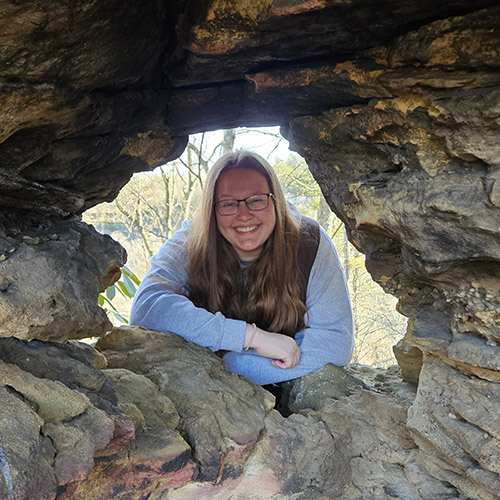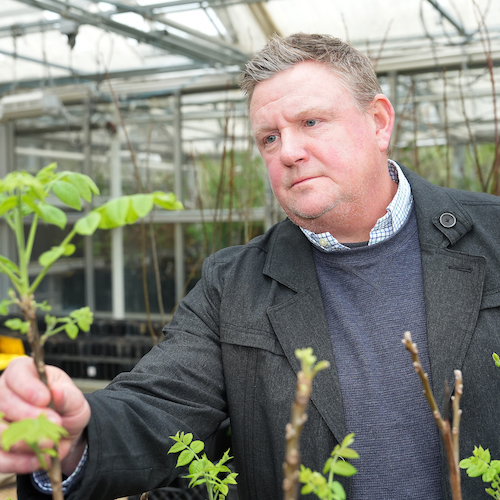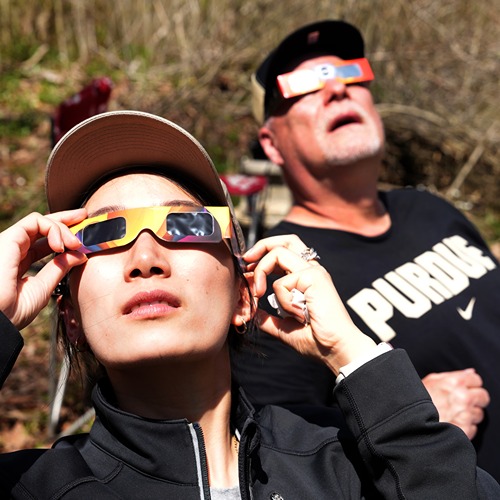The classic and trusted book "Fifty Common Trees of Indiana" by T.E. Shaw was published in 1956 as a user-friendly guide to local species. Nearly 70 years later, the publication has been updated through a joint effort by the Purdue Department of Forestry and Natural Resources, Indiana 4-H, and the Indiana Department of Natural Resources, and reintroduced as "An Introduction to Trees of Indiana."
A printed copy of the full publication is available for purchase for $7 in the Purdue Extension Education Store. The field guide helps identify common Indiana woodlot trees.
Each week, the Intro to Trees of Indiana web series will offer a sneak peek at one species from the book, paired with an ID That Tree video from Purdue Extension forester Lenny Farlee to help visualize each species as it stands in the woods. Threats to species health as well as also insight into the wood provided by the species, will be provided through additional resources as well as the Hardwoods of the Central Midwest exhibit of the Purdue Arboretum, if available.
This week, we meet the scotch pine, or Pinus sylvestris, which is not native to Indiana, but has been widely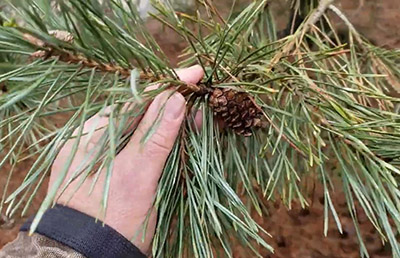 planted in the state for Christmas tree production.
planted in the state for Christmas tree production.
This conifer, also known as Scots pine, has clusters of two blue green or yellow green needles, which are one to three inches long and do not break when bent.
Bark on the scotch pine is light gray on the outside and orange in color on the inner bark, but it is not flaky like red pine. Bark on the lower end of the trunk is dark and blocky, while the upper bark is more orange.
On the tree, cones are cylindrical and pointed at the ends, approximately three inches long and do not have spines at the end of the scales. Cones become more egg shaped as the scales begin to open up once off the tree.
Scotch pine, which grows to between 25 and 60 feet tall, is typically found on acidic, moist, well-drained soil. It prefers full sun and has some drought tolerance. The species’ native range is Scotland, Scandinavia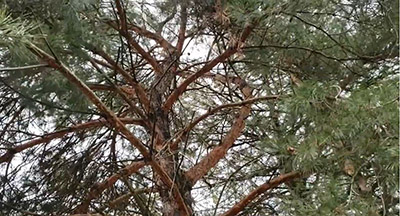 , northern Europe and northern Asia. According to the U.S. Forest Service database, It has been introduced across the United States and Canada and is naturalized in the Northeast and in the Great Lakes states.
, northern Europe and northern Asia. According to the U.S. Forest Service database, It has been introduced across the United States and Canada and is naturalized in the Northeast and in the Great Lakes states.
The Morton Arboretum notes that due to its susceptibility to insect and disease problems, Scotch pines are not recommended for planting and usually require removal or replacement. Damaging insect species include the pine root collar weevil, pine root tip weevil, the European pine sawfly and others. Scotch pine also is susceptible to diseases such as Scleroderris canker, Lophodermium needlecast, brown spot needle disease and western gall rust.
The Wood Database states that the scotch pine has a 12 percent moisture content and weighs in at 34 pounds per cubic foot. This species is rated as easy to work with using both hand and machine tools and it glues and finishes well.
Scotch pine is often used for erosion control and wind breaks. The species is a popular Christmas tree due to its form and ability to hold onto its needles for a long time. Commercially, it is also used for pulpwood and construction lumber.
Other Resources:
ID That Tree: Scotch Pine
Morton Arboretum: Scotch Pine
A Choose-and-Cut Pine and Fir Christmas Tree Case Study
Diplodia Tip Blight of Two-Needle Pines, The Education Store
Borers of Pines and Other Needle Bearing Evergreens in Landscapes, The Education Store
America’s Least Wanted Wood-Borers, Japanese Pine Sawyer, The Education Store
Managing the Zimmerman Pine Moth, The Education Store
Purdue Arboretum Explorer
The Woody Plant Seed Manual, U.S. Forest Service
Fifty Trees of the Midwest app for the iPhone, The Education Store
Native Trees of the Midwest, The Education Store
Shrubs and Woody Vines of Indiana and the Midwest, The Education Store
Investing in Indiana Woodlands, The Education Store
Forest Improvement Handbook, The Education Store
ID That Tree, Purdue Extension-Forestry & Natural Resources (FNR) YouTube playlist
Woodland Management Moment , Purdue Extension-FNR YouTube playlist
